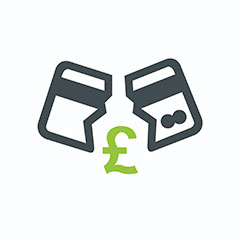- Visitors can check out the Forum FAQ by clicking this link. You have to register before you can post: click the REGISTER link above to proceed. To start viewing messages, select the forum that you want to visit from the selection below. View our Forum Privacy Policy.
- Want to receive the latest contracting news and advice straight to your inbox? Sign up to the ContractorUK newsletter here. Every sign up will also be entered into a draw to WIN £100 Amazon vouchers!
Collapse
You are not logged in or you do not have permission to access this page. This could be due to one of several reasons:
- You are not logged in. If you are already registered, fill in the form below to log in, or follow the "Sign Up" link to register a new account.
- You may not have sufficient privileges to access this page. Are you trying to edit someone else's post, access administrative features or some other privileged system?
- If you are trying to post, the administrator may have disabled your account, or it may be awaiting activation.
Logging in...
Previously on "VAT returns - box6: sum of Sales invoices or payments?"
Collapse
-
I use Cash Accounting Scheme, it is safer and easier to manage, can't see any reason why not
-
WHS. Use the invoice date, unless you're on the Cash Accounting Scheme for VAT.I use the invoice date.
From HMRC...
"Using standard VAT accounting, you pay VAT on your sales whether or not your customer has paid you. Using cash accounting, you do not need to pay VAT until your customer has paid you. If your customer never pays you, you never have to pay the VAT"
HM Revenue & Customs: Cash Accounting Scheme for VAT
Leave a comment:
-
I use the invoice date. If the invoice date falls in the VAT period then it goes on that return.Originally posted by Goggy View PostI'm on flat rate scheme.
When i calculate my VAT return, what should i put into the box 6: the sum of the received payments for the period or the sum of the invoices i've raised or whatever was raised first?
Not usually a problem as I am generally paid within a week of invoicing, although I could see it not being ideal if your agent pays on 30 day terms or similar.
Leave a comment:
-
You can do either, as long as you're consistent, in fact there's a third way, see below. I use the date payment is received, as it often means the VAT due for that month falls into the next quarter.Originally posted by Goggy View PostI'm on flat rate scheme.
When i calculate my VAT return, what should i put into the box 6: the sum of the received payments for the period or the sum of the invoices i've raised or whatever was raised first?
From: HM Revenue & Customs: Flat Rate Scheme: how to complete your VAT Return box-by-box
There are three ways that you can calculate your flat rate turnover:
Basic turnover. This is the VAT inclusive total of the sales and supplies you've made in the VAT period.
Cash-based turnover. This is the VAT inclusive sales and supplies you've been paid for in the VAT period.
Retailer's turnover. The retailer's turnover method is based on your daily takings. You make a record of payments as you receive them and total the takings every day. To work out the flat rate turnover you add your takings to any other income you receive.
Leave a comment:
-
VAT returns - box6: sum of Sales invoices or payments?
I'm on flat rate scheme.
When i calculate my VAT return, what should i put into the box 6: the sum of the received payments for the period or the sum of the invoices i've raised or whatever was raised first?Tags: None
- Home
- News & Features
- First Timers
- IR35 / S660 / BN66
- Employee Benefit Trusts
- Agency Workers Regulations
- MSC Legislation
- Limited Companies
- Dividends
- Umbrella Company
- VAT / Flat Rate VAT
- Job News & Guides
- Money News & Guides
- Guide to Contracts
- Successful Contracting
- Contracting Overseas
- Contractor Calculators
- MVL
- Contractor Expenses
Advertisers





Leave a comment: